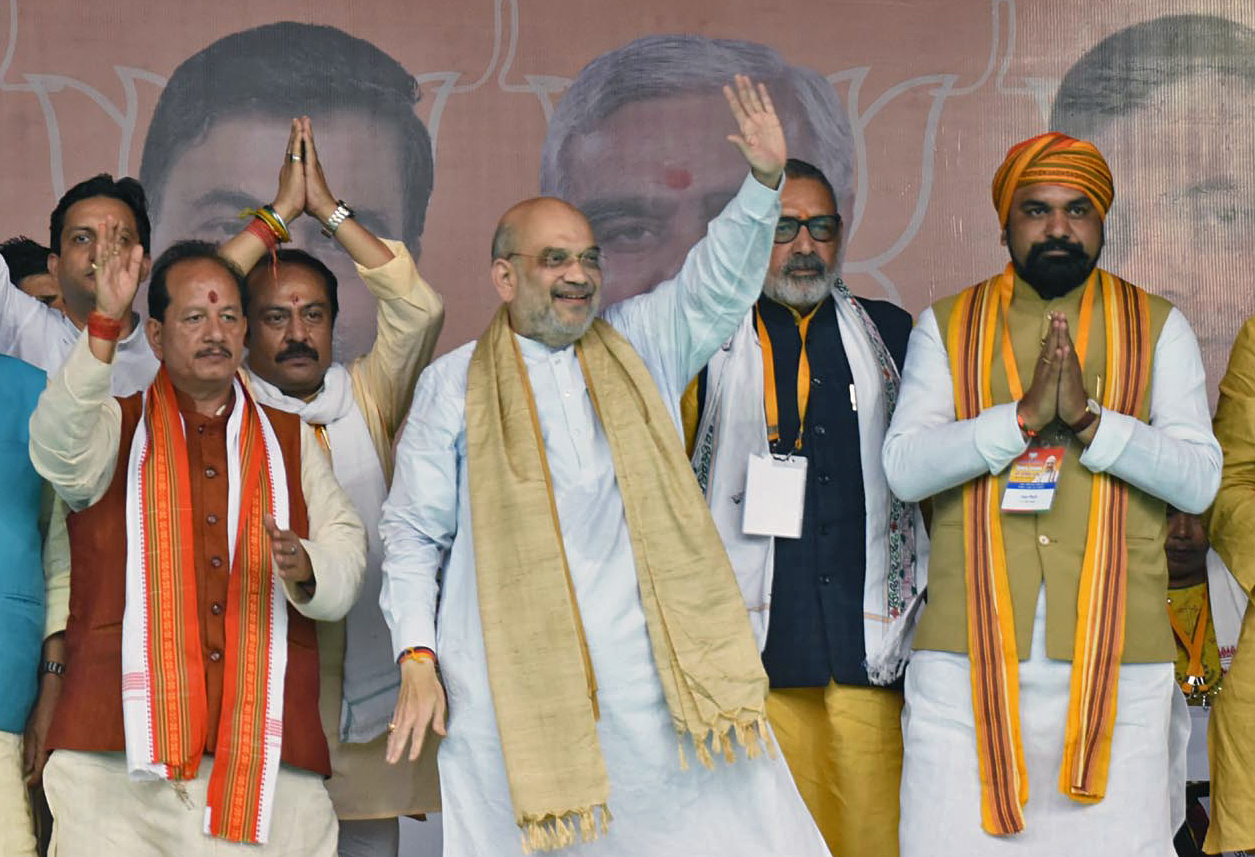
Union Home Minister Amit Shah’s latest rally in Bihar, hosted at Lakhisarai, offers a crucial glimpse into the Bharatiya Janata Party’s (BJP) strategy for the 2024 Lok Sabha elections. As a central figure in the party, Shah’s actions carry significant implications.
The rally, organised in the backyard of Nitish Kumar’s ally and JD(U) President Lalan Singh, was the first major BJP event following an opposition meeting in Patna on June 23rd. Targeting Lakhisarai, situated within Singh’s Munger Lok Sabha constituency, could be interpreted as a direct provocation towards Kumar. Moreover, the location was strategically chosen to potentially influence three Lok Sabha seats – Munger, Begusarai, and Jamui, thereby challenging the Grand Alliance’s caste-based support structure.
The BJP’s recent alliances signal a deliberate reshaping of caste dynamics in Bihar politics. The BJP is fostering connections with Dalit and extreme Dalit communities, represented by Chirag Paswan and Jitan Ram Manjhi respectively, which collectively make up around 14.5% of Bihar’s vote bank. Samrat Chaudhary, the newly appointed state president, and Upendra Kushwaha, a defector from Nitish Kumar’s party, both belong to the influential Koeri caste, holding a 7.5% share in Bihar. This move aims to dismantle Kumar’s traditional support base among the Koeri community.
Bihar’s upper caste, including Brahmins, Rajputs, Kayasths, Bhumihars, and Baniyas, comprise around 23% of the state’s voters and have traditionally favoured the BJP. In the meantime, the Rashtriya Janata Dal (RJD) relies heavily on Yadav and Muslim vote banks, accounting for approximately 30% of Bihar’s electorate.
The BJP’s efforts to disrupt Nitish Kumar’s social engineering within the backward and extremely Dalit communities have been pronounced since Modi’s rise in 2014. As a result, Kumar is now primarily viewed as a leader for the Kurmi community, with JD(U)’s potential largely contingent on candidate selection and local equations.
With Amit Shah’s rally as a backdrop, four strategic points emerge from BJP’s manoeuvring. First, the BJP aims to undermine Nitish Kumar by highlighting his power-seeking and inconsistent political positions. Second, by depicting the RJD and the opposition front as inherently corrupt, the BJP seeks to assure the public that their union is a fear-driven response to potential legal consequences. Third, the BJP is reframing the electoral contest not as Nitish Kumar versus Modi, but rather Rahul Gandhi versus Modi. Lastly, the BJP is strategically aligning with local parties to manipulate Bihar’s caste dynamics, intending to weaken the Grand Alliance’s stronghold.
The 2024 Lok Sabha elections will witness the BJP and Grand Alliance square off once more, with six parties on each side. As of now, the BJP’s strategic manoeuvres appear to put them on a stronger footing against the Grand Alliance, as they effectively tap into various caste equations and exploit the opposition’s weaknesses.
By Rana Yashwant